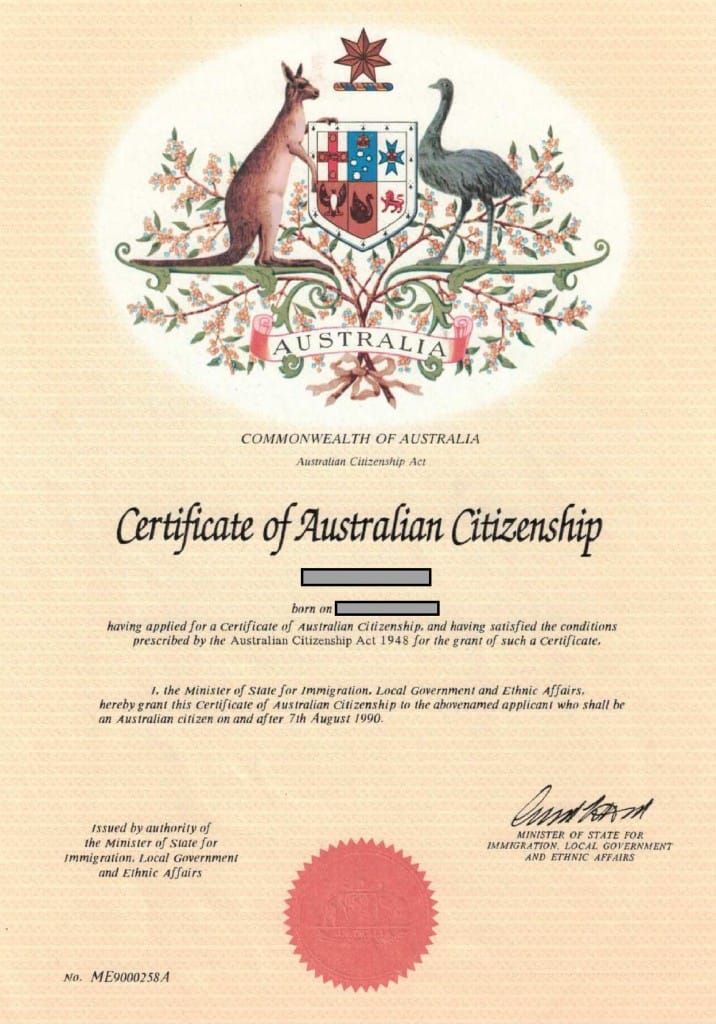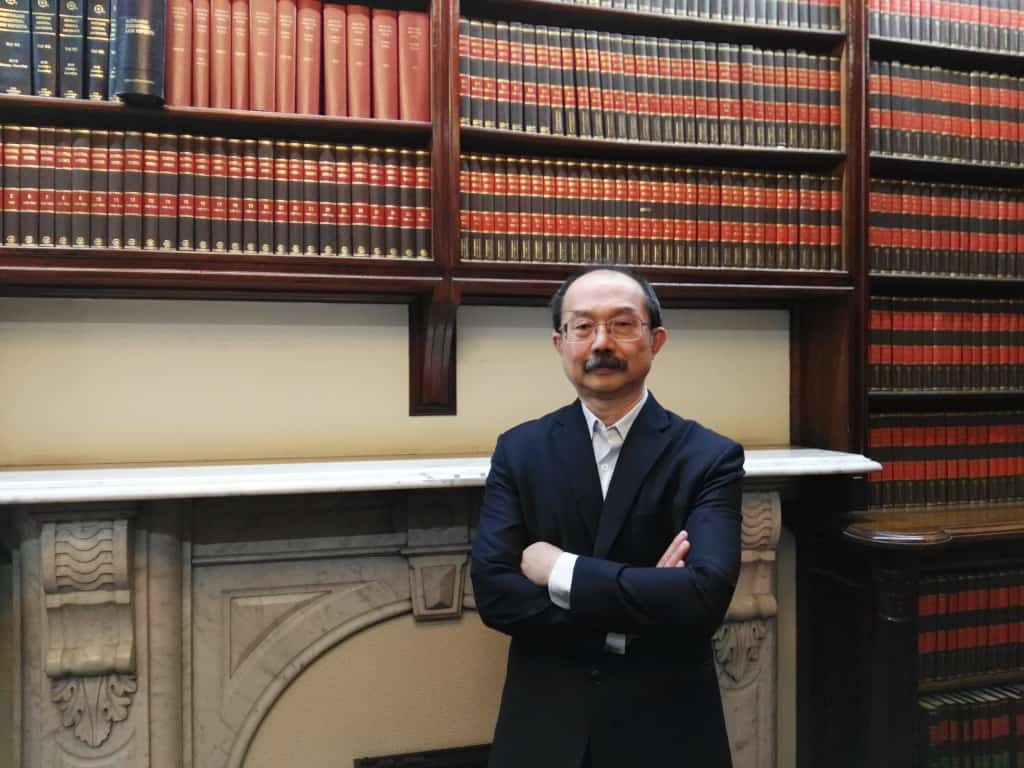
Citizenship by conferral and identity requirement – if you are applying for Australian citizenship by conferral under the Australian Citizenship Act 2007, the Department must be satisfied as to your identity pursuant to s. 24(3).
Section 24(3) states that the Department must not approve an Applicant becoming an Australian citizen unless it is satisfied of the identity of the Applicant. The decision maker in deciding whether the Applicant’s identify is satisfied, will be assisted by the Australian Citizenship Policy Statement including the Citizenship Procedural Instruction 16 and Chapter 13.
Citizenship by conferral and identity requirement – to fulfil the identity requirement, there are 3 pillars of identity to be considered and they are:
- biometrics;
- documents; and
- life story.
The term “identity’ is not defined in the Citizenship Act. However, the Supplementary Explanatory Memorandum to the Australian Citizenship Bill 2005 states:
“There may be cases where identity is unclear or cannot be satisfactorily ascertained. In these circumstances the Minister cannot approve the person becoming an Australian citizen.”
The Australian Citizenship Policy Statement provides at Chapter 13:
“The identify provisions prohibit the approval of a citizenship applicant in cases where the decision maker is not satisfied of the person’s identity.”
The Policy makes reference to the National Identity Proofing Guidelines 2016 which states:
“A person’s identity is not a fixed concept; it is highly dependent on context. It is some combination of characteristics or attributes that allow a person to be uniquely distinguished from others within a specific context.”
The Citizenship Procedural Instruction 16 (Assessing Identity under the Citizenship Act) identities 3 pillars of identity: biometric, documents and life story. It also states that:
“Officers should not rely on a single pillar to establish a person’s identity. Considering a single pillar in isolation is generally inadequate for providing a reliable basis on which to establish a person’s identity. In order to comprehensively test and evaluate a person’s claims with regard to their identity, decision-makers should consider each pillar.”
It also states with regard to being “satisfied of a person’s identity”:
“Reaching the point where a decision-maker is satisfied or not satisfied of a person’s identity is a process of exercising informed judgement. It should reflect a process of reasoning where the decision-maker has turned their mind to the issue(s) and the evidence and information has been rationally and impartially weighed.”
For the decision maker to be “satisfied”, s/he must consider whether or not s/he is persuaded on the basis of evidence of a person’s identity. What this mean is that the decision maker cannot be satisfied simply as a result of a “mere mechanical comparison of probabilities independently of any belief in its reality”. Similarly, the decision maker does not require incontrovertible evidence of a person’s claimed identity to be satisfied of that identity.
It is not just about information and documents, but its quality, plausibility and relevance of the information provided in the context of how it supports or refutes a person’s claimed identity. So, more documents do not necessarily result in better identification of a person.
It should be noted that while the production of documents to establish identity is not legally essential, however not producing requires a cogent and acceptable explanation: CDWB and WLVM v MIBP [2018] AATA 757 at [9]. In addition, failing to show positive steps in obtaining identity or supporting documents or provided an acceptable reason for not doing so, that failure will weight against an applicant: Dhayahpa and MIBP [2015] AATA 310 at [117].
To explain the citizenship by conferral and identity requirement, we will refer to the case of Karimi and Minister for Immigration, Citizenship, Migrant Services and Multicultural Affairs (Citizenship) [2021] AATA 1018 (26 April 2021).
Karimi arrived in Australia as an unauthorised maritime arrival on 21 December 2010. He claimed that he was born on 28 September 1977 and his citizenship was Iranian Kurd and had a Green card.
In his Unauthorised Arrival interview, he said he was born in Iraq in August 1975 and was stateless, he and his family were expelled from Iraq in 1978 and moved to IIam, Iran and did not have a Green card.
When he applied for a Protection visa he completed Form 80 (Character Assessment) he stated that he was born in Iraq on 27 May 1975.
In July 2011, Karimi requested his date of birth be changed from 27 May 1975 to 27 May 1972.
On 24 August 2015, Karimi applied for Australian citizenship by conferral stating that he was born on 27 May 1972 in Iran.
On 29 August 2018, he was granted a RRV (click here to learn more about subclass 155 visa) and departed the country on 8 November 2018. On 16 June 2019 on his incoming passenger card Karimi stated that he spent most of the time in Iran visiting friends and relatives.
The AAT noted that Karimi had provided 4 different birth dates more than 5 years apart. Karimi claimed that this was due to error of translation and calendar conversions.
The AAT said that Karimi has provided inconsistencies and implausibilities regarding his life story such as receiving payments for work done before coming to Australia. He also claimed that he had borrowed monies from his parents and brother, but no repayments were made in the last 10 years, no one has asked for him to repay yet the “debt is still in place”.
Karimi also claimed that he used fake passport to depart Iran, but the Tribunal did not accept that it was possible because all passports were checked against a computer system and there are multiple persons being responsible for the ultimate authority to board a plane. Hence, the Tribunal said many people would need to be bribed if Karimi was to leave using a fake passport.
The Tribunal also said that it would be extremely dangerous, undesirable, difficult and even fatal for Karimi to return to Iran on his RRV. The Tribunal did not accept that Karimi’s claim that he was smuggled in and out of Iran for his visit. In addition, Karimi’s wife and children currently live in Iran as undocumented stateless persons and that they voluntarily choose to live in Iran.
More importantly, the Tribunal finds that Karimi return to a country where he claimed to fear great harm and danger, this undermines his credibility. The Tribunal finds that Karimi’s life story in this regard is implausible.
As Karimi did not provide biometric and documents, the Tribunal can only assess his “life story” pillar of the 3 pillars of identity. On balance, the Tribunal cannot be satisfied, as required under s. 24(3), of Karimi’s identity.
When completing the citizenship application or providing supporting document, it is important that you put effort into completing the task or risk refusal – click here to prevent your application being refused.
Australian migration law is complex and difficult to understand, contact our immigration lawyer for a consultation (fee applies) to help you understand Australian citizenship by conferral and identity requirement. Click here to learn about citizenship test; or click here for character requirement; or click here for residence requirements or click here for general residence requirement discretion.

 041 222 4020 or WeChat: AUDvisa
041 222 4020 or WeChat: AUDvisa
This article is not intended to be or taken as migration legal advice. The author of this article disclaims any liability for any action or omission on the information provided or not provided in this article. You should always consult an immigration lawyer or a registered migration agent to form an informed opinion on your immigration matter.


